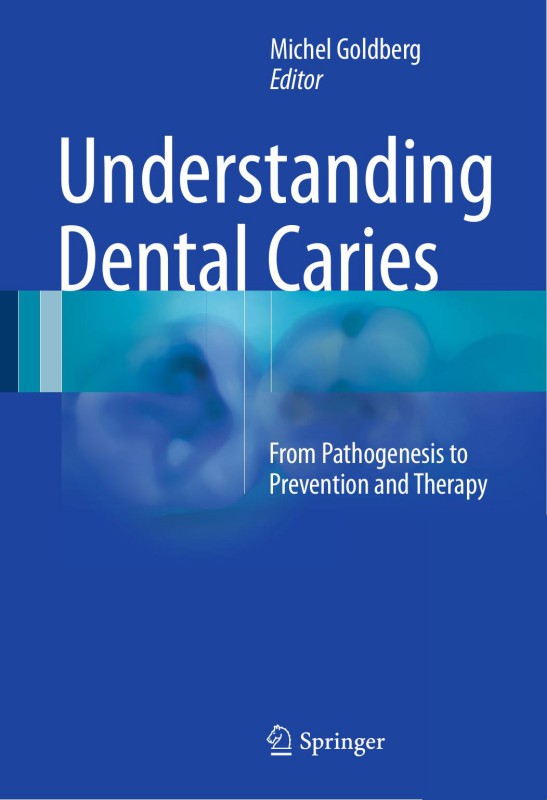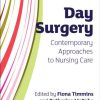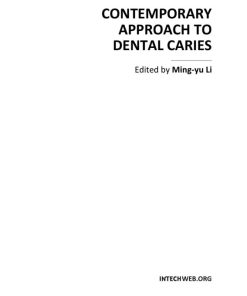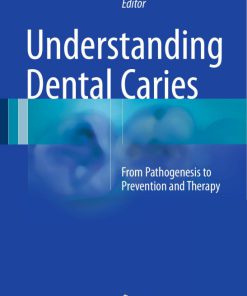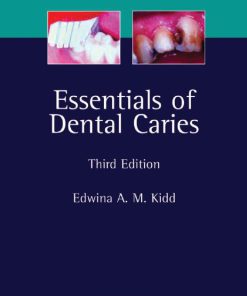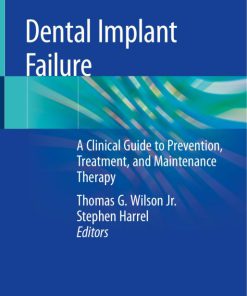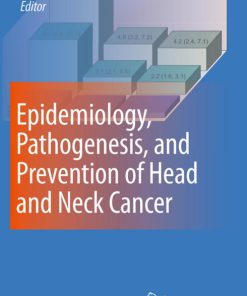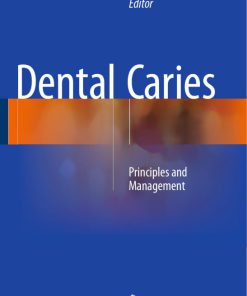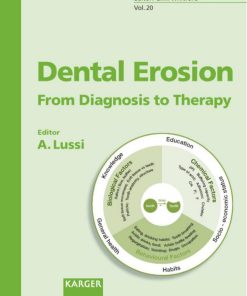Understanding Dental Caries From Pathogenesis to Prevention and Therapy 1st edition by Michel Goldberg 9783319305523 3319305522
$50.00 Original price was: $50.00.$25.00Current price is: $25.00.
Authors:Michel Goldberg , Series:Dentistry [60] , Author sort:Goldberg, Michel , Ids:Goodreads , Languages:Languages:eng , Published:Published:Jun 2016 , Publisher:Springer , Comments:Comments:This book thoroughly explains the biological background of dental caries and the formation of carious lesions, providing the reader with a sound basis for understanding the role and effectiveness of different therapeutic and preventive measures. Detailed information is presented on pathogenesis, ultrastructure, and diagnosis. All aspects of the carious process are covered, including development of the initial carious lesion limited to the enamel, evolution of the enamel carious lesion toward a dentin carious lesion, superficial and deep dentin lesions, and cervical erosions. Strategies for prevention and dental tissue regeneration are elaborated and both conventional therapies and minimally invasive and non-invasive treatment approaches are discussed. A separate section is devoted to dental fluorosis and the use of fluoridation and remineralisation agents. This scientifically focused and clinically relevant book, written by acknowledged experts in the field, will appeal to dentists seeking to extend their knowledge as well as to researchers, dental students, and other dental professionals.”
Understanding Dental Caries From Pathogenesis to Prevention and Therapy 1st edition by Michel Goldberg- Ebook PDF Instant Download/Delivery.9783319305523,3319305522
Full download Understanding Dental Caries From Pathogenesis to Prevention and Therapy 1st edition after payment
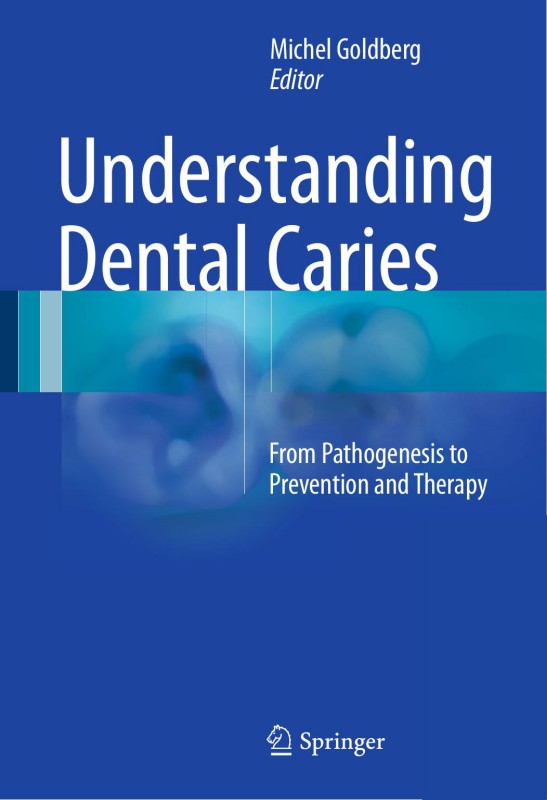
Product details:
ISBN 10:3319305522
ISBN 13:9783319305523
Author:Michel Goldberg
This book thoroughly explains the biological background of dental caries and the formation of carious lesions, providing the reader with a sound basis for understanding the role and effectiveness of different therapeutic and preventive measures. Detailed information is presented on pathogenesis, ultrastructure, and diagnosis. All aspects of the carious process are covered, including development of the initial carious lesion limited to the enamel, evolution of the enamel carious lesion toward a dentin carious lesion, superficial and deep dentin lesions, and cervical erosions. Strategies for prevention and dental tissue regeneration are elaborated and both conventional therapies and minimally invasive and non-invasive treatment approaches are discussed. A separate section is devoted to dental fluorosis and the use of fluoridation and remineralisation agents. This scientifically focused and clinically relevant book, written by acknowledged experts in the field, will appeal to dentists seeking to extend their knowledge as well as to researchers, dental students, and other dental professionals.
Understanding Dental Caries From Pathogenesis to Prevention and Therapy 1st Table of contents:
Part I: The Carious Enamel
1: Understanding Dental Caries – from Pathogenesis to Prevention and Therapy
1.1 The Carious Enamel
1.2 Introduction
1.3 Structure
1.4 Diagnosis
1.5 Which Treatment Is Appropriate (When)
References
2: Enamel Softening (Dental Erosion)
2.1 Introductory Remarks
2.2 Dental Erosion
2.3 Crystallite Dissolution
2.3.1 Four Types of Physical and Chemical Dental Erosions Have Been Reported
2.3.2 Structure and Chemistry of Dental Erosion
2.3.3 Intrinsic Causes of Erosion
References
3: Enamel Etching
3.1 The Acid-Etched Enamel: Clinical Usefulness
3.2 Effects of Acid or Chelating Solutions on Dental Enamel
3.3 The Thickness of Enamel Layers After Etching
References
4: The Early Enamel Carious Lesion
4.1 Enamel Structure and Composition
4.2 The Early Carious Enamel Lesion
4.3 Occlusal and Proximal Caries
4.4 Microscopic Changes of Enamel (Figs. 4.4, 4.5, 4.6, and 4.7)
4.5 Ultrastructural Changes in Enamel
References
5: Dental Biofilms in Health and Disease
5.1 Introduction
5.2 Resident Microbiota of the Mouth
5.3 Benefits of the Oral Microbiota
5.4 Dental Biofilms
5.5 Dental Plaque Formation
5.6 Microbiology of Caries
5.7 Cariogenic Features of Dental Biofilm Bacteria
5.8 Theories to Explain the Association of Dental Plaque Biofilms to Caries
5.9 Implications for Prevention and Control
References
6: New Caries Diagnostic Methods
6.1 Introduction
6.2 Laser-Induced Fluorescence Methods
6.3 Quantitative Light-Induced Fluorescence (QLF)
6.4 Fiber-Optic Transillumination (FOTI)
6.5 Near-Infrared Transillumination
Conclusions
References
7: From the Initial Carious Lesion of Enamel to the Early Development of Coronal Dentin Carious
7.1 Dentin Caries: The Different Layers
7.1.1 Non-carious Dentin
7.1.2 Extracellular Organic Matrix
7.2 Size of the Hydroxyapatite Crystallites in the Intertubular Dentin
7.3 White and Brown Spots
References
Part II: The Carious Dentin
8: The Dentinoenamel Junction
8.1 Cervical Cemento-Dentinal Formation
8.2 Biomechanical Aspects of the Cervical Zone
8.2.1 Structural Aspects of Cervical Enamel and Dentin
8.2.1.1 Enamel
8.2.1.2 Dentin
8.2.1.3 Cervical Lesions
8.2.2 Mechanical and Tribological Properties of the DEJ
8.2.3 Specific Composition of the DEJ
8.2.4 Enzymes
8.2.5 Abfraction Lesion Formation
References
9: Superficial and Deep Carious Lesions
9.1 Different Types of Carious Lesion
9.2 Reactionary and Reparative Dentin Formation
References
10: Cervical Sclerotic Dentin: Resin Bonding
10.1 Introduction
10.2 Noncarious Cervical Sclerotic Dentin
10.3 Microstructural Changes in Sclerotic Dentin
10.3.1 Tubular Occlusion
10.3.2 Hypermineralized Surface Layer in Shiny Sclerotic Lesions
10.3.3 Mineral Distribution
10.3.4 STEM/EDX Analysis
10.3.5 Status of the Collagen Fibrils Within the Surface Hypermineralized Layer
10.3.6 Summary of the Microstructural Changes in Noncarious Sclerotic Cervical Dentin
10.4 Bonding Adhesive Resins to Sclerotic Dentin
10.4.1 Total-Etch Technique
10.4.2 Self-Etching Technique
10.4.3 Problems in Bonding to Sclerotic Dentin
10.4.4 Obstacles in Bonding to Acid-Etched, Sound Dentin
10.4.5 Obstacles in Bonding to Acid-Etched Sclerotic Dentin
10.4.6 Obstacles to Bonding in Sound Dentin Treated with a Self-Etching Primer Alone
10.4.7 Obstacles in Bonding to Self-Etching Primer Treated Sclerotic Dentin
10.4.7.1 Sclerotic Dentin with a Thin Hypermineralized Layer (<0.5 μm Thick)
10.4.7.2 Sclerotic Dentin with a Thick, Continuous Hypermineralized Layer (>0.5 μm)
10.4.8 Summary of Obstacles in Bonding to Sound Versus Sclerotic Dentin
10.5 Regional Microtensile Bond Strength Evaluation
10.6 Restoring the Class V Sclerotic Lesion
Conclusions
References
11: The Pulp Reaction Beneath the Carious Lesion
11.1 Extracellular Matrix of Sound Pulp: Composition
11.2 Cells
11.3 Neuropeptides in Dental Pulp
11.4 Human T-Lymphocyte Subpopulation
11.5 The Carious Pulp
11.6 Reactionary and Reparative Dentin Formation
11.6.1 Reactionary Dentin Formation
11.6.2 Reparative Dentin Formation
11.7 Pulp Capping
References
Part III: Cervical Erosions
12: Ultrastructure of the Enamel-Cementum Junction
12.1 Procollagen Fibrillogenesis in Dentinogenesis
12.2 Enamel Surface
12.3 Morphology of the Cemento-Enamel Junction
12.4 Erosive Tooth Wear (Figs. 12.4 and 12.5)
12.5 Root Caries
References
13: Cervical Erosions: Morphology and Restoration of Cervical Erosions
13.1 Morphology of Cervical Dentin Erosion
13.2 Restoration of Cervical Dentin Erosions
References
14: Cervical Regeneration
14.1 Abfraction: Non-carious Cervical Lesions
14.2 Pulpal Regeneration
14.3 Dental Pulp Engineering and Regeneration: Advancement and Challenge
14.4 Tooth Resorption
14.5 Cervical Regeneration
References
Part IV: Fluoride
15: Fluoride
15.1 Dental Fluorosis
15.1.1 Mechanisms of Enamel Fluorosis
15.1.2 Fluoride Effects on Dentin Formation
15.2 Fluoride in Food and Water
15.3 Fluoride and Remineralizing Agents
15.3.1 Fluoride Delivered from Oral Care Products
15.3.2 Other Remineralizing Agents
References
Part V: Invasive and Non-invasive Therapies
16: Brushing, Toothpastes, Salivation, and Remineralization
16.1 Toothbrushing and Toothpaste
16.1.1 Changes in Fluoride Concentration of Saliva During Brushing
16.1.2 Modern Toothpastes
16.1.3 Modern Toothpaste Components
16.1.4 Fluoride and Non-fluoride Mineralization Systems
16.1.5 Toothpastes and Abrasivity
16.1.6 Toothpastes and Abrasivity Testing
16.2 Toothbrush: Manual vs. Power
16.2.1 Brushing Techniques
16.2.2 Clinical Brushing Studies
16.2.3 Power Brush Options
16.3 Saliva and Saliva Substitutes
References
17: Resin Infiltration Treatment for Caries Lesions
17.1 Background
17.2 Uptake of Extraneous Materials into Carious Lesions
17.3 Infiltration of Carious Enamel with Resin Materials
17.3.1 Background
17.3.2 Fissure Sealing
17.3.3 Infiltration
17.3.4 Resins for Infiltration
17.3.4.1 Resorcinol Formaldehyde
17.3.4.2 Methacrylate-Based Resins
17.3.5 Detection of Resin Within the Lesion and Measurement of Occluded Volume
17.3.5.1 Detection of Infiltrated Resin
17.3.5.2 Determination of Occluded Pore Volume
17.3.6 Effects of Infiltration on Carious Tissue
17.3.7 Application to Other Enamel Dysplasias Exhibiting Abnormal Porosity
17.3.8 Future Developments
17.3.8.1 Design of Infiltration Materials
References
18: Minimally Invasive Therapy: Keeping Treated Teeth Functional for Life
18.1 Introduction
18.2 Minimal Intervention Dentistry
18.2.1 Its Rationale
18.2.2 Its Cornerstones
18.3 Managing Dental Caries
18.3.1 Managing Enamel Carious Lesions: Therapies Other Than Fluoride and Infiltration
18.3.1.1 Casein Phosphopeptides-�Amorphous Calcium Phosphate
18.3.1.2 Ozone
18.3.1.3 Chlorhexidine-Containing Agents
18.3.1.4 Sealants
Indications for Placing a Sealant
Resin-Based Sealants
Atraumatic Restorative Treatment (ART) High-Viscosity Glass-Ionomers
Effectiveness of Fissure Sealants
Comparison Between ART Sealants and Resin Sealants
18.4 Managing Dentine Carious Lesions
18.4.1 How Does One Manage a Dentine Carious Lesion?
18.4.2 Non-cavitated Dentine Carious Lesions
18.4.3 Small Cavitated Dentine Carious Lesions
18.4.4 Obvious Cavitated Dentine Carious Lesions in Primary Teeth
18.4.4.1 Cleansable Cavitated Dentine Carious Lesions
Ultraconservative Treatment
Silver Diamine Fluoride
Hall Technique
18.4.5 Restorative Management of Carious Lesions
18.4.5.1 Principles for the Removal of Demineralised Carious Dentine
18.4.5.2 How Much Demineralised Carious Dentine Needs to be Removed?
18.4.5.3 Which Dentine Carious Tissue Removal Method Is Preferable?
18.4.5.4 Disinfecting Excavated Tooth Cavities
18.4.5.5 Cavity Lining
18.4.5.6 Restorative Materials
18.4.5.7 Restoring a Cleaned Cavity
18.4.5.8 The Atraumatic Restorative Treatment
18.5 How to Manage a Defective Restoration
18.6 Concluding Remarks
References
19: Invasive and Noninvasive Therapies
19.1 Prevention in Dental Practice
19.1.1 What Is Prevention?
19.1.2 Individual Caries Risk Assessment
19.1.3 Strategies for Prevention
19.1.3.1 Education
Preventing Early Colonization
Toothbrushing
Dietary Counseling
19.1.3.2 Dental Sealants
19.1.3.3 Fluoridated Agents
Fluoride Toothpaste
Fluoride Varnish
Fluoride Mouthwashes
Fluoride Gels
Comparison of the Caries-Preventive Effectiveness of One Form of Topical Fluoride Intervention w
Slow-Release Fluoride Devices
Fluoride Tablets, Drops, Chewing Gums, and Lozenges
19.1.3.4 Non-fluoridated Agents
Xylitol-Containing Products
Chlorhexidine
CPP-ACP
Other Molecules
19.1.4 Follow-Up
19.1.5 Caries Management by Risk Assessment
19.1.6 Key Messages for Dental Practitioners
People also search for Understanding Dental Caries From Pathogenesis to Prevention and Therapy 1st :
4 factors of dental caries
difference between tooth decay and dental caries
explain dental caries
understanding dental caries as a non-communicable disease
understanding dental charting
You may also like…
eBook PDF
Contemporary Approach to Dental Caries 1st Edition by Ming Yu Li ISBN 9535103059 9789535103059
eBook PDF
Conquering RAS From Biology to Cancer Therapy 1st edition by Asfar Azmi 9780128035412 0128035412
eBook PDF
Dental Caries Principles and Management 1st Edition by Zhou Xuedong ISBN 3662474506 9783662474501
eBook PDF
Dental Erosion From Diagnosis to Therapy 1st Edition by Adrian Lussi ISBN 3805580975 9783805580977

